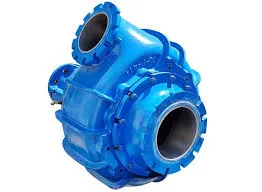TEL:
+86 13120555503
English
- Afrikaans
- Albanian
- Amharic
- Arabic
- Armenian
- Azerbaijani
- Basque
- Belarusian
- Bengali
- Bosnian
- Bulgarian
- Catalan
- Cebuano
- Corsican
- Croatian
- Czech
- Danish
- Dutch
- English
- Esperanto
- Estonian
- Finnish
- French
- Frisian
- Galician
- Georgian
- German
- Greek
- Gujarati
- Haitian Creole
- hausa
- hawaiian
- Hebrew
- Hindi
- Miao
- Hungarian
- Icelandic
- igbo
- Indonesian
- irish
- Italian
- Japanese
- Javanese
- Kannada
- kazakh
- Khmer
- Rwandese
- Korean
- Kurdish
- Kyrgyz
- Lao
- Latin
- Latvian
- Lithuanian
- Luxembourgish
- Macedonian
- Malgashi
- Malay
- Malayalam
- Maltese
- Maori
- Marathi
- Mongolian
- Myanmar
- Nepali
- Norwegian
- Norwegian
- Occitan
- Pashto
- Persian
- Polish
- Portuguese
- Punjabi
- Romanian
- Russian
- Samoan
- Scottish Gaelic
- Serbian
- Sesotho
- Shona
- Sindhi
- Sinhala
- Slovak
- Slovenian
- Somali
- Spanish
- Sundanese
- Swahili
- Swedish
- Tagalog
- Tajik
- Tamil
- Tatar
- Telugu
- Thai
- Turkish
- Turkmen
- Ukrainian
- Urdu
- Uighur
- Uzbek
- Vietnamese
- Welsh
- Bantu
- Yiddish
- Yoruba
- Zulu
Telephone: +86 13120555503
Email: frank@cypump.com
Feb . 15, 2025 06:11 Back to list
Self Priming Sewage Pump
Replacing a sewage ejector pump can seem like a daunting task, but with the right approach, it becomes manageable and straightforward. As someone with years of experience navigating the intricacies of plumbing systems, I can confidently guide you through this process, ensuring not only a successful replacement but also enhanced performance and reliability for your system.
The removal process of the old pump begins by loosening the clamp or unbolting the flange, carefully disconnecting the vent and discharge pipes. Exercise caution during this step, as residual wastewater can be present. Proper disposal of the old unit is essential since these pumps could contain materials that are considered hazardous. Installing the new pump requires meticulous following of the manufacturer’s guidelines, ensuring that the pump is securely fitted and correctly aligned. Connect the discharge and vent pipes firmly, and if applicable, install a check valve to prevent backflow. The discharge line should be tested for leaks by filling the basin with water and running the pump to ensure proper operation. Conduct a comprehensive inspection post-installation check for vibrations or unusual sounds and ensure that the pump cycles appropriately without delay or overextension. Regular maintenance following installation enhances the reliability and extends the life of the unit. This includes periodic checks of the float switch and cleaning of the sump basin. Trusting expert advice when replacing a sewage ejector pump can be invaluable. Consultation with professionals ensures compliance with local codes and offers peace of mind. Seeking reviews and recommendations online from trusted sources also greatly aids in selecting the best product tailored to your needs. In conclusion, while replacing a sewage ejector pump might seem complex, it is an essential task for maintaining the health of your plumbing system, especially in properties where gravity drainage is not feasible. By selecting a high-quality pump, adhering to proper installation practices, and committing to routine maintenance, you ensure optimal function and longevity of your sewage ejector system. Equip yourself with the right knowledge and tools, and you will undertake this task with confidence and competence.


The removal process of the old pump begins by loosening the clamp or unbolting the flange, carefully disconnecting the vent and discharge pipes. Exercise caution during this step, as residual wastewater can be present. Proper disposal of the old unit is essential since these pumps could contain materials that are considered hazardous. Installing the new pump requires meticulous following of the manufacturer’s guidelines, ensuring that the pump is securely fitted and correctly aligned. Connect the discharge and vent pipes firmly, and if applicable, install a check valve to prevent backflow. The discharge line should be tested for leaks by filling the basin with water and running the pump to ensure proper operation. Conduct a comprehensive inspection post-installation check for vibrations or unusual sounds and ensure that the pump cycles appropriately without delay or overextension. Regular maintenance following installation enhances the reliability and extends the life of the unit. This includes periodic checks of the float switch and cleaning of the sump basin. Trusting expert advice when replacing a sewage ejector pump can be invaluable. Consultation with professionals ensures compliance with local codes and offers peace of mind. Seeking reviews and recommendations online from trusted sources also greatly aids in selecting the best product tailored to your needs. In conclusion, while replacing a sewage ejector pump might seem complex, it is an essential task for maintaining the health of your plumbing system, especially in properties where gravity drainage is not feasible. By selecting a high-quality pump, adhering to proper installation practices, and committing to routine maintenance, you ensure optimal function and longevity of your sewage ejector system. Equip yourself with the right knowledge and tools, and you will undertake this task with confidence and competence.
Share
Next:
Latest news
-
ISG Series Pipeline Pump - Chi Yuan Pumps | High Efficiency, Durable Design
NewsAug.01,2025
-
Advanced Flue Gas Desulfurization Pump with GPT-4 Turbo | Durable & Efficient
NewsJul.31,2025
-
ISG Series Vertical Pipeline Pump - Chi Yuan Pumps | Advanced Hydraulic Design&Durable Construction
NewsJul.31,2025
-
ISG Series Vertical Pipeline Pump - Chi Yuan Pumps | Energy Efficient & Low Noise
NewsJul.31,2025
-
pipeline pump - Chi Yuan Pumps Co., LTD.|High Efficiency&Low Noise
NewsJul.31,2025
-
ISG Series Vertical Pipeline Pump - Chi Yuan Pumps Co., LTD.|High Efficiency, Energy Saving, Low Noise
NewsJul.30,2025










